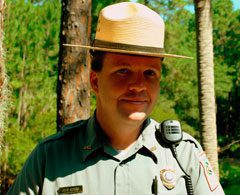 This particular column has been easy and difficult to write. Easy because it led me to indulge in wonderful, timeless music. ‘Happiness in a can.’ My feet couldn’t keep still, arthritis and all. Difficult because how dare I wander into the world of the musical giants without a high clearance pass of sorts?
This particular column has been easy and difficult to write. Easy because it led me to indulge in wonderful, timeless music. ‘Happiness in a can.’ My feet couldn’t keep still, arthritis and all. Difficult because how dare I wander into the world of the musical giants without a high clearance pass of sorts?
This grand country has a magnificent history of fighting back hard, starting with epic struggles against the British to gain independence. One pictures the miserable battles fought by tattered, freezing, underfed and often poorly armed troops led by George Washington. An incredible tableau of steadfast dedication to all that western society now stands for then unfolded for nearly 75 years before being rocked by the Civil War, and again 55 years later by the Great Depression, followed immediately and inhumanely by World War II. America, leader of the free world, was brought near its knees by global exigencies linked to despair, ruin and psychopathy that probably never confronted any nation before. Who else, though, was there to fight back but the dutiful citizens of the United States and their allies?
And fight back they did, with a ferocity for which we can be forever grateful. FDR and his minions enacted a rolling series of alphabet programs such as the WPA (Works Progress Administration) and the CCC (Civilian Conservation Core). We didn’t stop there, though. Vested deep in America’s soul was the heartbeat of a new generation’s music. Variously termed swing, big band, dance music or just jazz, a hurricane of energy and enthusiasm swept every state we had and reverberated around the world. Beginning in the mid-1930’s, with Benny Goodman’s spectacular orchestra and followed quickly by the incomparable Glenn Miller, America told the world that it had more than enough emotional gas in its tank to take on whatever horrible challenges befell it. We were “in the mood.”
Born Benjamin David Goodman into immigrant poverty in Chicago in 1909, his father working in a stockyard shoveling ghastly raw lard every day, Benny Goodman was born to change our country’s cultural landscape. His clarinet playing was breathtaking, his foray into integrating assorted bands groundbreaking. A few people saw it coming. As a lad in short pants Benny wandered into Chicago music stores and endeared himself to the great Jelly Roll Morton, the father of jazz (see Reich and Gaines’ “Jelly’s Blues: The Life, Music, and Redemption of Jelly Roll Morton”). By 1935 Goodman had rocketed to fame in Los Angeles with a big band sound that left no feet un-shivered, almost no couple that wanted to dance standing blandly by just to listen.
Goodman’s huge hits from the 1930’s still shine, of course, in CD’s or off the internet. I modestly challenge anyone to listen to “Bugle Call Rag” or “Swingtime in the Rockies,” for example, with both feet remaining nailed to the carpet. Just consider the throngs of people going crazy to this music against a backdrop of 25% unemployment, bread and soup lines, broken families, and the vast horrors of the dustbowl. Here was this energetic young man, both a task master and shrewd interpreter of American culture. Mr. Goodman slam dunked the music world for another 50 years, living very near my parents in Stamford, CT toward the end.
By 1939 another child of poverty, Glenn Miller blasted to the top of the swing and big band charts. Miller was a gifted musician (and another relentless taskmaster) who wrote, arranged and played trombone in a blistering streak of hit songs that made him and many of his sidemen wealthy, including the great saxophonist Tex Beneke (1914-2000).
Miller had a gargantuan 72 top ten hits between 1939 and 1942 and a mind bending 23 at #1 including all time classics like “Moonlight Serenade,” “Tuxedo Junction,” and “Little Brown Jug.” Had he not been killed in a freak accident over the English Channel on his way to rejoin his band in Paris in 1944, there is no telling where his artistry and uncanny commercial feel for what the public wanted to listen and dance to would have led. As it happened, his death occurred not long after the Allies finally turned around the horrid war in the Atlantic, offsetting and then destroying through more advanced technology German Admiral Karl Donitz’s U-boat “wolf packs” that were sinking hundreds of thousands of tons of shipping to and from Great Britain at great loss of life. Ed Offley’s “Turning the Tide” (Basic Books, 2011) clarifies that we were finally positioned to bend the entire war our way and accelerate victory. America fought on and somehow managed to dance, maintain its footing, and help keep the lamps of freedom burning around the globe.
Like Goodman, Miller’s musical descendants keep his legacy alive through worldwide concert dates. The Glenn Miller Orchestra’s (GMO’s) marvelous e-newsletter appears regularly in my inbox. As Joop Visser said, Miller became a legend: “a man who brought millions of people as close to jazz as they were ever to be.”
Miller’s influence was simply not to stop with his untimely death. The GMO plays to rave press reviews around the world. See all those toes tapping? It’s the Depression and WWII all over again but without the crushing casualties and misery. As Charles DeStefano with Glenn Miller Productions, Inc. told me recently, they remain extremely busy and constantly try to reach out to younger audiences, often booking dates at high schools. Among their wonderful new recordings are “In the Mood” (take a look at www.glennmillerorchestra.com).
A Benny Goodman tribute band was here in Beaufort last September and brought down the house. As local press heralded the tribute concert at USCB, “Hailed by The New York Times as ‘Goodman straight up with a twist of lightning,’ New York City jazz clarinetist and Benny Goodman alumnus Ken Peplowski is featured with the highly acclaimed Capitol Center Jazz Orchestra to celebrate the 75th anniversary of Benny Goodman’s historical 1938 jazz concert at New York City’s famed Carnegie Hall.”
Both original bands I believe remain unalterably eligible for the daunting title of creators of America’s soundtrack. They were and are fantastic but not to be compared (as I once tried) apples to apples. In a conversation I just had with the gifted Denis Diblasio, Director of Jazz Studies and Composition at Rowan University, they each stood capably on talent and merit. Both bands worked to achieve commercial success, certainly, but in Diblasio’s words, “the goal is always to play what you love.”
Fair enough. In the end, fortunately, America fought back from the horrors of the 1930’s and 1940’s. In some ways, the country couldn’t help it, in other ways it needed all the help it could get. In my little scorebook, Glenn Miller and Benny Goodman were catalysts for victory that couldn’t have been bought at any price. And to think that all these years later, their musical heirs are still making it happen. “Sing Sing Sing” and “Moonlight Serenade” indeed. You just have to love it.








